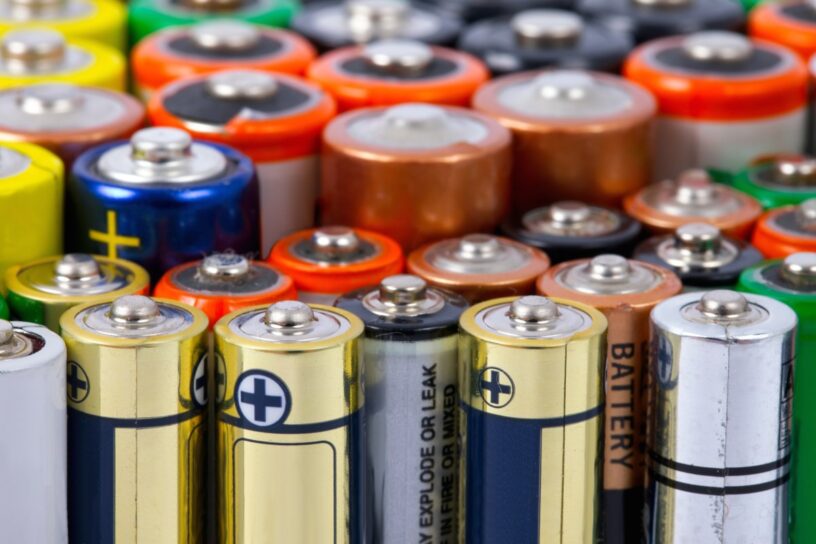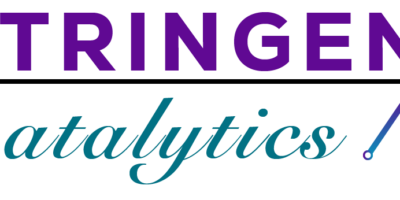The Lithium-ion Batteries for Medical Market plays a crucial role in the healthcare sector, providing reliable and efficient power solutions for a wide range of medical devices and equipment. Lithium-ion (Li-ion) batteries have become the preferred choice in medical applications due to their high energy density, longer lifespan, lightweight nature, and fast charging capabilities. These batteries are vital for powering portable medical devices, implantable devices, diagnostic equipment, and emergency medical tools, among others.
Key Drivers of the Lithium-ion Batteries for Medical Market:
- Growing Demand for Portable and Wearable Medical Devices:
- The increasing use of portable medical devices such as ventilators, infusion pumps, defibrillators, and monitoring systems has driven the demand for lithium-ion batteries. Their compact size, lightweight nature, and high energy density make them ideal for these applications.
- Advancements in Implantable Medical Devices:
- Lithium-ion batteries are increasingly used in implantable medical devices such as pacemakers, neurostimulators, and hearing aids, where long battery life and reliability are critical. These batteries offer superior performance over traditional battery technologies like nickel-cadmium or lead-acid.
- Technological Advancements in Battery Technology:
- Continuous improvements in lithium-ion battery technology, such as enhanced safety features, longer battery life, and faster charging times, have boosted their adoption in the medical field. New chemistries and designs are being developed to improve safety and performance in sensitive medical environments.
- Growing Geriatric Population and Chronic Diseases:
- The global rise in the elderly population and the increasing prevalence of chronic diseases such as cardiovascular conditions, diabetes, and respiratory illnesses have spurred the need for medical devices that rely on lithium-ion batteries. This demographic trend is expected to drive market growth further.
- Miniaturization of Medical Devices:
- The trend toward smaller, more compact medical devices has created a demand for lightweight, high-capacity batteries. Lithium-ion batteries are ideal for miniaturized devices, enabling manufacturers to design compact yet powerful equipment that improves patient mobility and convenience.
Market Segmentation:
- By Application:
- Portable Medical Devices: These include devices like portable ventilators, infusion pumps, and blood glucose monitors that require reliable, lightweight power sources.
- Implantable Medical Devices: Lithium-ion batteries power life-saving devices such as pacemakers, cochlear implants, and neurostimulators that need long-lasting, safe battery solutions.
- Diagnostic Equipment: Many diagnostic tools, such as ultrasound machines and handheld imaging devices, are powered by lithium-ion batteries for mobility and ease of use in different settings.
- Home Healthcare Devices: The rise in home healthcare, particularly for chronic disease management, has led to increased use of lithium-ion-powered devices like oxygen concentrators and telehealth equipment.
- By Type:
- Lithium Cobalt Oxide (LCO): Known for its high energy density, LCO is commonly used in devices that require a long battery life and small size, like hearing aids and other wearables.
- Lithium Iron Phosphate (LFP): LFP batteries are known for their safety, longer cycle life, and stability, making them suitable for medical equipment where safety and longevity are priorities.
- Lithium Nickel Manganese Cobalt Oxide (NMC): NMC batteries offer a balance of performance, safety, and energy density, making them versatile for a wide range of medical applications.
- Lithium Titanate Oxide (LTO): Known for its excellent safety profile and rapid charging capabilities, LTO batteries are used in critical applications where quick charging and safety are essential, such as in emergency medical equipment.
- By End User:
- Hospitals and Clinics: Hospitals and healthcare providers rely on lithium-ion batteries to power a wide range of medical devices used in emergency care, surgery, and patient monitoring.
- Home Healthcare: As home healthcare grows in popularity, lithium-ion batteries are increasingly powering devices for patients managing chronic conditions at home.
- Diagnostic Centers: Diagnostic centers use portable imaging and diagnostic tools that depend on lithium-ion batteries for mobility and efficiency.
Market Trends:
- Increased Focus on Battery Safety:
- Safety is a major concern in the healthcare sector, particularly with lithium-ion batteries used in medical devices. Manufacturers are focusing on improving the safety features of lithium-ion batteries, such as thermal management, overcharge protection, and improved battery chemistry to prevent overheating or leakage.
- Growing Adoption of Rechargeable Batteries:
- Rechargeable lithium-ion batteries are increasingly preferred over single-use batteries due to their longer life, cost-effectiveness, and environmental benefits. This trend is particularly significant in medical devices that require frequent use, like wearable devices and diagnostic tools.
- Integration of Smart Battery Technologies:
- The development of smart lithium-ion batteries with integrated monitoring systems is a growing trend in the medical market. These batteries can provide real-time data on their health, charging status, and usage patterns, allowing for better maintenance and preventing unexpected failures in critical devices.
- Emergence of Solid-State Lithium-ion Batteries:
- Solid-state lithium-ion batteries, which use a solid electrolyte instead of a liquid one, are being explored for medical applications due to their potential for higher energy density, improved safety, and longer life. While still in the early stages of commercialization, these batteries could revolutionize medical device power solutions in the future.
- Sustainability and Recycling Initiatives:
- The medical industry is increasingly focusing on sustainability, and lithium-ion battery recycling programs are gaining importance. Developing recycling methods to safely recover and reuse materials from used batteries is a growing area of research and development.
Challenges:
- Safety Concerns:
- Despite advancements in battery technology, safety concerns such as thermal runaway, overheating, and fire hazards still pose risks, especially in implantable and portable medical devices. Ensuring battery safety through rigorous testing and compliance with regulatory standards is critical.
- High Costs:
- Lithium-ion batteries, especially those designed for medical applications with enhanced safety and performance features, can be expensive. The high cost may limit their adoption in certain healthcare settings, particularly in developing regions where healthcare budgets are constrained.
- Regulatory Compliance:
- Lithium-ion batteries used in medical devices must meet stringent regulatory requirements to ensure their safety and effectiveness. Navigating the complex regulatory landscape can be challenging for manufacturers, delaying product approvals and market entry.
- Recycling and Disposal Issues:
- Proper disposal and recycling of lithium-ion batteries are essential to prevent environmental harm. However, recycling programs for medical batteries are still in their infancy, and the lack of established systems for safe disposal and recovery of materials remains a challenge.
Future Outlook:
The Lithium-ion Batteries for Medical Market is expected to grow significantly in the coming years, driven by the increasing adoption of portable and wearable medical devices, advancements in battery technology, and the growing focus on home healthcare. Innovations in battery safety, energy density, and lifespan will continue to drive the development of new products, while solid-state lithium-ion batteries and smart technologies represent promising future trends.
As healthcare technology advances and the demand for efficient power solutions grows, lithium-ion batteries will remain at the forefront of powering critical medical devices. However, addressing safety concerns, regulatory challenges, and sustainability issues will be crucial to ensuring their widespread and safe adoption in the medical field.
Click Here, To Get Free Sample Report https://stringentdatalytics.com/sample-request/lithium-ion-batteries-for-medical-market/16041/
Market Segmentations:
Global Lithium-ion Batteries for Medical Market: By Company
Samsung
Panasonic
LG Chem
Toshiba
Hitachi
GS Yuasa
Johnson Controls
Tadiran Batteries
Saft Batteries
Cell-Con
Amperex Technology
Boston-Power
Ecsem Industrial
Electrovaya
Shenzhen BAK Battery
Global Lithium-ion Batteries for Medical Market: By Type
Cylindrical
Prismatic
Polygon
Coin
Global Lithium-ion Batteries for Medical Market: By Application
Implantable Devices
Non-implantable Devices
Global Lithium-ion Batteries for Medical Market: Regional Analysis
The regional analysis of the global Lithium-ion Batteries for Medical market provides insights into the market’s performance across different regions of the world. The analysis is based on recent and future trends and includes market forecast for the prediction period. The countries covered in the regional analysis of the Lithium-ion Batteries for Medical market report are as follows:
North America: The North America region includes the U.S., Canada, and Mexico. The U.S. is the largest market for Cold-chain Pharma in this region, followed by Canada and Mexico. The market growth in this region is primarily driven by the presence of key market players and the increasing demand for the product.
Europe: The Europe region includes Germany, France, U.K., Russia, Italy, Spain, Turkey, Netherlands, Switzerland, Belgium, and Rest of Europe. Germany is the largest market for Cold-chain Pharma in this region, followed by the U.K. and France. The market growth in this region is driven by the increasing demand for the product in the automotive and aerospace sectors.
Asia-Pacific: The Asia-Pacific region includes Singapore, Malaysia, Australia, Thailand, Indonesia, Philippines, China, Japan, India, South Korea, and Rest of Asia-Pacific. China is the largest market for Cold-chain Pharma in this region, followed by Japan and India. The market growth in this region is driven by the increasing adoption of the product in various end-use industries, such as automotive, aerospace, and construction.
Middle East and Africa: The Middle East and Africa region includes Saudi Arabia, U.A.E, South Africa, Egypt, Israel, and Rest of Middle East and Africa. The market growth in this region is driven by the increasing demand for the product in the aerospace and defense sectors.
South America: The South America region includes Argentina, Brazil, and Rest of South America. Brazil is the largest market for Cold-chain Pharma in this region, followed by Argentina. The market growth in this region is primarily driven by the increasing demand for the product in the automotive sector.
Click Here, To Buy Premium Report https://stringentdatalytics.com/purchase/lithium-ion-batteries-for-medical-market/16041/?license=single
Frequently Asked Questions About This Report
- How big is the Market?
- What is the Market growth?
- Which segment accounted for the largest Market share?
- Who are the key companies/players in the Market?
- What are the factors driving the Market?
- How has the Covid-19 pandemic affected the Market?
- What is the leading solution segment in the Market?
- What is the leading deployment segment in the Market?
- Which enterprise segment accounted for the largest revenue share in the Market?
About Stringent Datalytics
Stringent Datalytics offers both custom and syndicated market research reports. Custom market research reports are tailored to a specific client’s needs and requirements. These reports provide unique insights into a particular industry or market segment and can help businesses make informed decisions about their strategies and operations.
Syndicated market research reports, on the other hand, are pre-existing reports that are available for purchase by multiple clients. These reports are often produced on a regular basis, such as annually or quarterly, and cover a broad range of industries and market segments. Syndicated reports provide clients with insights into industry trends, market sizes, and competitive landscapes. By offering both custom and syndicated reports, Stringent Datalytics can provide clients with a range of market research solutions that can be customized to their specific needs.
Contact Us
Stringent Datalytics
Contact No- +1 346 666 6655
Email Id- sales@stringentdatalytics.com




Leave a Reply